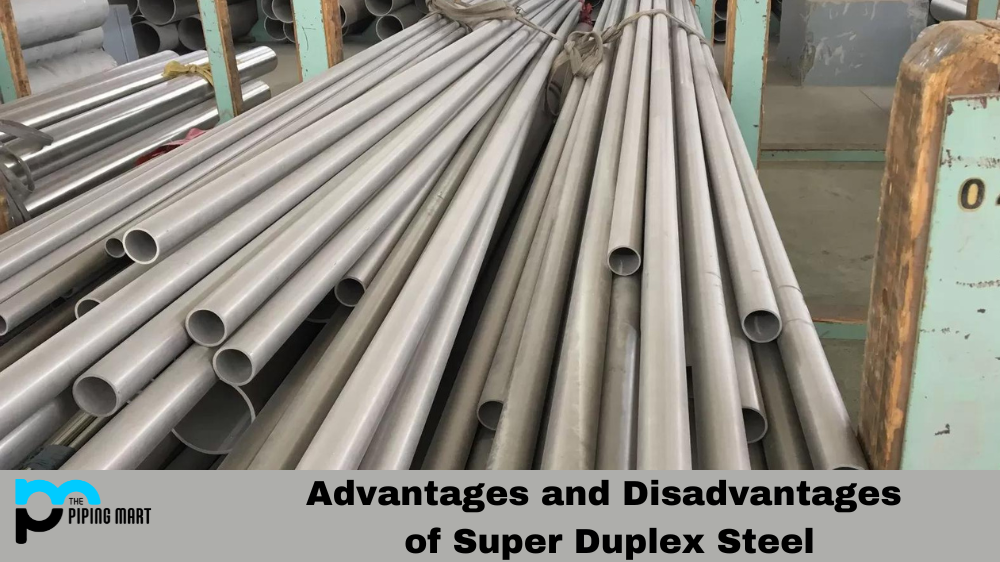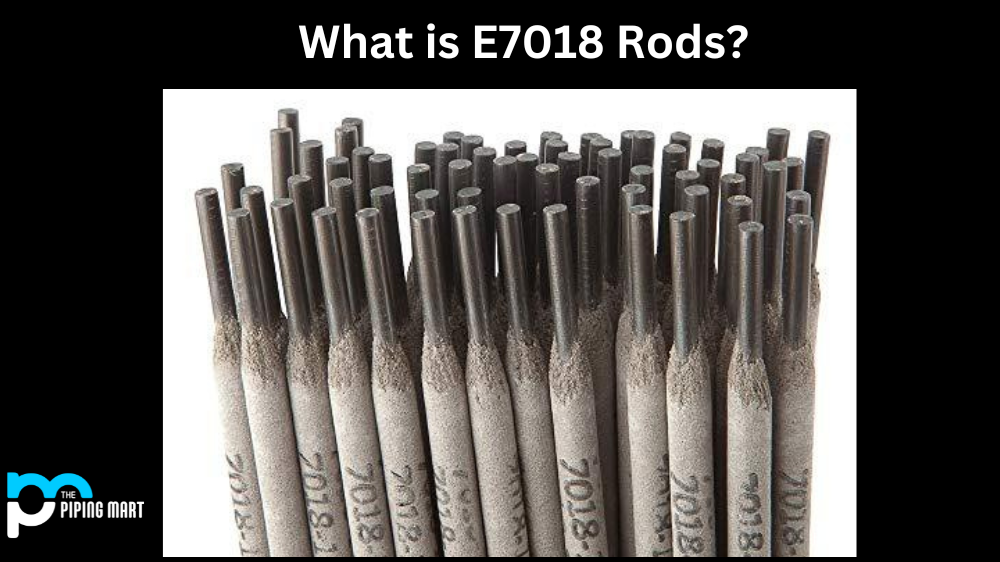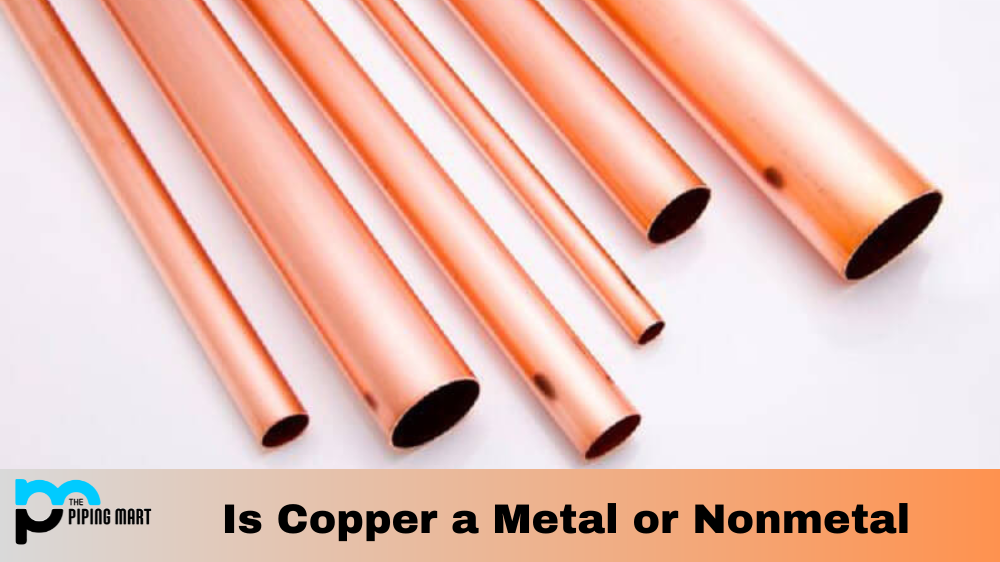Super duplex steel is a type of stainless steel alloy with greater corrosion resistance than other types of stainless steel. It’s known for its high strength and excellent mechanical properties, making it an ideal choice for many applications across industries ranging from construction to marine engineering. However, like any material, there are advantages and disadvantages to using super duplex steel. Let’s take a look at both sides of the equation.
Advantages of Super Duplex Steel
One major advantage of super duplex steel is that it offers superior corrosion resistance compared to regular stainless steel. This makes it ideal for use in applications where regular stainless steel would quickly corrode due to contact with harsh chemicals or seawater. Additionally, because it has a higher chromium content than regular stainless steel, it also offers better heat resistance and can withstand higher temperatures. This makes it perfect for use in applications such as power generation or petrochemical plants where extreme temperatures are common.
Super duplex steel also provides excellent fatigue strength, which means that components made from this material can last longer under stress before they need to be replaced or repaired. This makes it ideal for structural components in bridges or buildings that are subjected to vibration or repetitive loading over time. Finally, since super duplex steel has a lower nickel content than other types of stainless steel, it is more economical and cost-effective to manufacture components from this material.
Excellent Corrosion Resistance
One of the primary advantages of super duplex stainless steel is that it offers excellent corrosion resistance. This alloy contains high levels of chromium, molybdenum, and nitrogen, which work together to provide superior resistance to pitting and crevice corrosion. Additionally, super duplex stainless steel is less likely to suffer from stress corrosion cracking than other types of stainless steel.
Higher Strength
Super duplex stainless steel is also much stronger than other types of stainless steel. This alloy contains high levels of chromium, molybdenum, and nitrogen, which work together to provide superior strength and hardness. Additionally, super duplex stainless steel has a higher yield strength than austenitic or ferritic stainless steel, making it ideal for applications that require high strength.
Good Weldability
Another advantage of super duplex stainless steel is that it has good weldability. This alloy can be easily welded using all standard welding methods, including gas tungsten arc welding, shielded metal arc welding, and submerged arc welding. Additionally, super duplex stainless steel can be welded to itself as well as other types of stainless steel.
Good Machinability
Super duplex stainless steel is also quite machinable, making it easy to work with using both traditional and CNC machines. This alloy can be machined using all standard machining methods, including turning, milling, drilling, and grinding. Additionally, super duplex stainless steel can be machined at high speeds without the risk of tool breakage or wear.
Economical
Another advantage of super duplex stainless steel is that it is quite economical. This alloy is less expensive than other high-strength steels, such as titanium or nickel-based alloys. Additionally, super duplex stainless steel is often used as a cost-effective alternative to more expensive materials in applications where its excellent corrosion resistance and high strength are not required.
Disadvantages of Super Duplex Steel
Despite the many advantages of super duplex steel, there are also some drawbacks. One major disadvantage is that this material is more difficult to work with than regular stainless steel due to its higher hardness levels and greater strength properties. As a result, machining costs may be higher when manufacturing components from super duplex steel compared to regular stainless steel. Additionally, post-weld treatment may be required after welding parts together which could add further cost or lead-time delays depending on the application and complexity involved in the process itself. Finally, while the price per pound may be lower compared to other types of stainless steel due to its lower nickel content, overall costs may still be higher due to its greater weight requirements when manufacturing components from this material versus others such as aluminum alloys or titanium alloys which weigh less per volume but have comparable strength properties overall.
More expensive
One of the primary disadvantages of super duplex steel is that it is more expensive than other types of steel. This is because super duplex steel contains a higher percentage of chromium and molybdenum, which are two of the most expensive alloying elements. Additionally, super duplex steel is often more difficult to produce than other types of steel, which also contributes to its higher cost.
Corrosion issues
Another disadvantage of super duplex steel is that it is susceptible to corrosion in certain environments. This is because super duplex steel contains a lower percentage of chromium than other types of stainless steel. As a result, super duplex steel is not as resistant to corrosion as other types of stainless steel, and it may require special coatings or treatments in order to prevent corrosion.
Not as strong as other steels
While super duplex steel is stronger than many other types of stainless steel, it is not as strong as some other types of steel, such as carbon steel. This is because super duplex steel contains a lower percentage of carbon than other types of steel. As a result, super duplex steel is not as strong as some other types of steel, but it still has many desirable properties.
Difficult to weld
Another disadvantage of super duplex steel is that it can be difficult to weld. This is due to the fact that super duplex steel contains a high percentage of chromium and molybdenum, which can make welding difficult. Additionally, super duplex steels often have high carbon and nitrogen levels, making welding difficult.
Conclusion
Overall, super duplex steel has several advantages over other materials when used in certain applications such as those involving corrosive environments or extreme temperatures where other materials may not perform as well without degrading rapidly over time. However, one must consider all aspects before deciding if this material is suitable for their needs, including machining complexity requirements and potential costs associated with post-weld treatments if welding is involved in fabrication processes. Ultimately though, when used correctly, super duplex steel can offer superior performance compared to most alternatives available today, making it an ideal choice for many industrial applications!

Abhishek is a seasoned blogger and industry expert, sharing his insights and knowledge on various topics. With his research, Abhishek offers valuable insights and tips for professionals and enthusiasts. Follow him for expert advice on the latest trends and developments in the metal industry.




